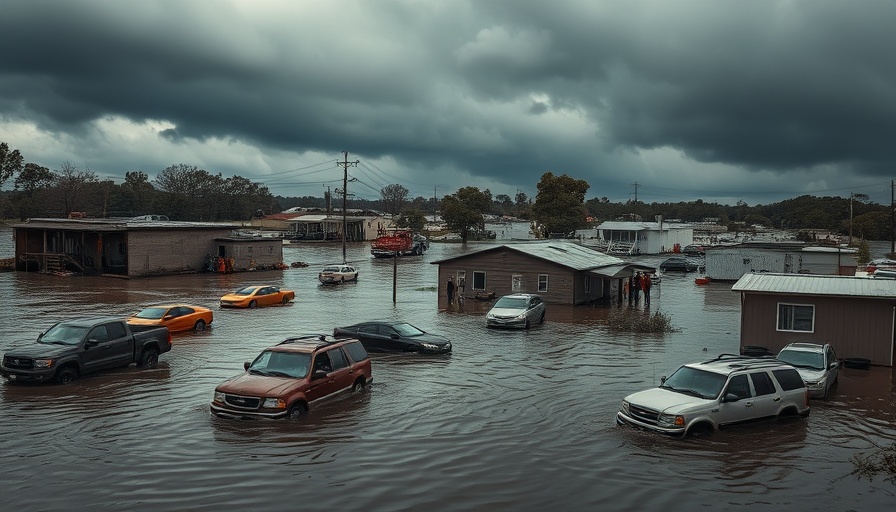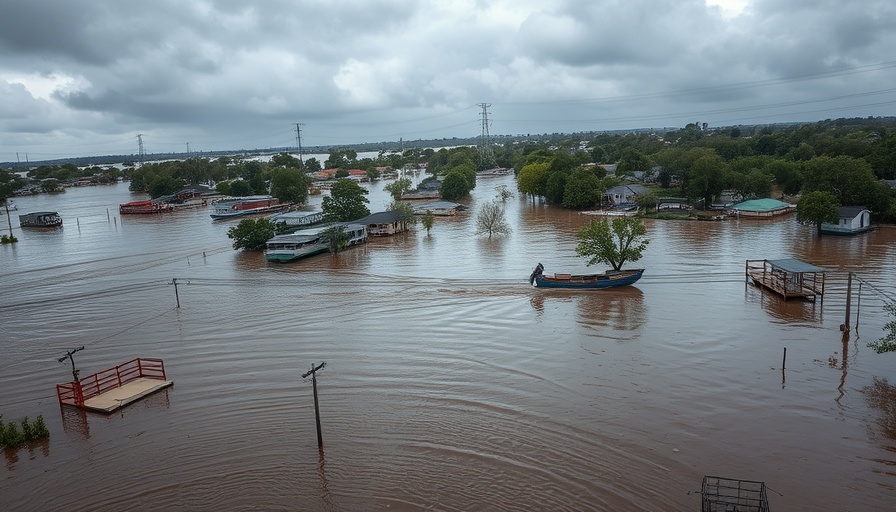
Hill Country Flash Floods: A Tragic Tipping Point for Texas Resilience
In a devastating turn of events, the Hill Country region of Texas is grappling with the aftermath of catastrophic flash floods that have claimed at least 24 lives. Rescue efforts continue as fears grow for the safety of 23 girls from Camp Mystic, a Christian girls' camp, missing since the deluge struck. With heavy rains pouring down in Central Texas, it's a situation that has not only shaken the community but also reignited discussions on the need for robust emergency preparedness.
Details of the Disaster
The floods were exacerbated by nearly 10 inches of rain that fell in just a few hours in areas like Kerr County. The local Guadalupe River witnessed a staggering rise of 26 feet within a mere 45 minutes. Such swift and severe changes in water levels turned tranquil recreational spots into dangerous torrents almost instantaneously, blocking roads, overtaking homes, and tragically marking lives lost. Lt. Gov. Dan Patrick has confirmed that rescue teams, numbering in the hundreds and equipped with helicopters and drones, are tirelessly working to find survivors amidst the rubble.
Human Stories Behind the Numbers
As search and rescue operations unfold, the emotional toll on families is palpable. Many are anxiously awaiting news about their loved ones, torn between hope and despair. Parents of the missing Camp Mystic campers are holding their breath as assurances from government officials offer little comfort in this heart-wrenching moment. “We will do anything humanly possible to find your daughter,” Patrick declared, symbolizing a commitment to leave no stone unturned, and a promise that resonates with all currently affected by this tragedy.
The Broader Implications: Preparing for Future Flood Events
This disaster has raised critical questions regarding the state of Texas’ emergency response strategies in light of climate change and increasingly erratic weather patterns. Experts warn that events like this could become more frequent, necessitating that both local and state governments invest more in infrastructure, early warning systems, and community awareness programs. With flash floods forecast in other areas, including San Antonio and Waco, now is a crucial time to reassess preparedness strategies across the Lone Star State.
The Economic Impact on Local Communities
The implications of these floods extend beyond immediate rescue efforts. Communities in Texas, particularly rural ones, often lack the resources to quickly recover from such disasters. Businesses may face significant disruptions, property values could decline, and communities may experience a long-lasting emotional toll. Texas' economy, already stressed by various challenges, must not overlook investing in disaster resilience to safeguard against future crises.
Emerging from Tragedy: Community Solidarity in Action
In the face of adversity, the spirit of Texan resilience shines through. Local organizations and volunteers are mobilizing meals, drills, clothing, and shelter for those affected. The call for community support serves as a reminder of the strength that comes from unity. As Texans come together to assist their neighbors, this collective effort showcases the compassion and solidarity characteristic of the Lone Star State.
Lessons Learned: Navigating the Path Forward
Even amid confusion and heartbreak, the ongoing situation can serve as a catalyst for change, urging new approaches to disaster preparedness. As Texas faces the aftermath, the necessity of effective leadership and forward-thinking policies becomes clear. Understanding flood patterns, enhancing infrastructure, and establishing clear communication lines during emergencies are essential tasks that lie ahead.
The unfolding tragedy in Hill Country is more than just a grim statistic; it's a critical moment that emphasizes the value of being prepared for unpredictable weather events and the strength of community connections in addressing challenges together.
 Add Element
Add Element  Add Row
Add Row 



 Add Row
Add Row  Add
Add 


Write A Comment